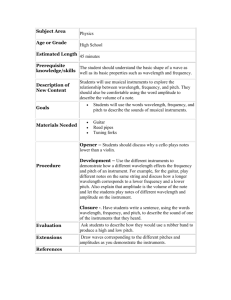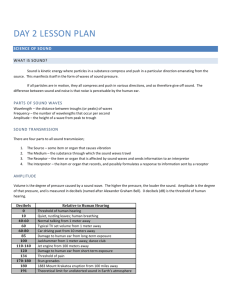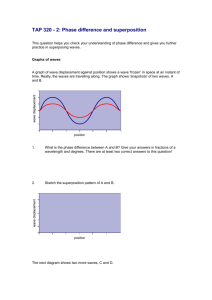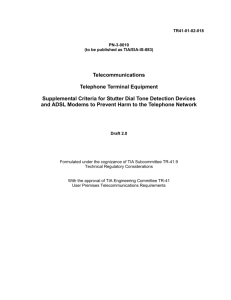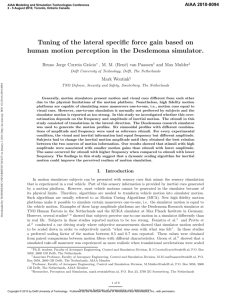Sound Wave Properties: PhET Simulation Worksheet
advertisement
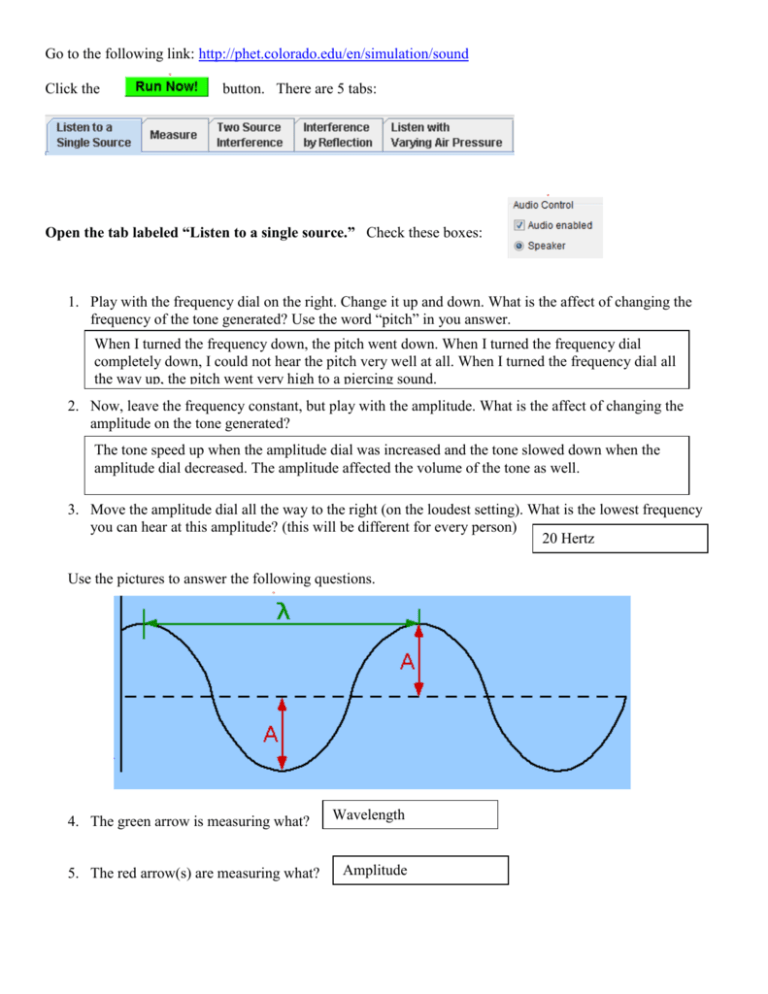
Go to the following link: http://phet.colorado.edu/en/simulation/sound Click the button. There are 5 tabs: Open the tab labeled “Listen to a single source.” Check these boxes: 1. Play with the frequency dial on the right. Change it up and down. What is the affect of changing the frequency of the tone generated? Use the word “pitch” in you answer. When I turned the frequency down, the pitch went down. When I turned the frequency dial completely down, I could not hear the pitch very well at all. When I turned the frequency dial all the way up, the pitch went very high to a piercing sound. 2. Now, leave the frequency constant, but play with the amplitude. What is the affect of changing the amplitude on the tone generated? The tone speed up when the amplitude dial was increased and the tone slowed down when the amplitude dial decreased. The amplitude affected the volume of the tone as well. 3. Move the amplitude dial all the way to the right (on the loudest setting). What is the lowest frequency you can hear at this amplitude? (this will be different for every person) 20 Hertz Use the pictures to answer the following questions. 4. The green arrow is measuring what? 5. The red arrow(s) are measuring what? Wavelength Amplitude 6. The following picture shows two waves. Both of them have different wavelengths and amplitudes. 7. Which one would have a higher pitch; the top or bottom one? Bottom one. The following picture shows three waves. 8. All three waves have different Amplitudes/frequencies. 9. Which one of them would be the loudest? A. Top B. Middle C. Bottom D. All the Same C 10. Which one would have the highest pitch? A. Top B. Middle C. Bottom D. All the Same C 11. Which one has the smallest wavelength? A. Top B. Middle C. Bottom D. All the Same D Open the tab labeled “Measure.” Set up your screen like the following: 12. Calculate the speed of this sound wave by recording how much time it takes to travel 5 meters. Use the (old school) velocity equation: v = d/t Show units in your work. 13. Based on the speed you measured above, how long would it take for you to hear thunder if you observed lightning and it was seen to be 1620 meters away? 14. Is there a different equation that we can use to calculate the velocities of waves? What is that equation? What variables does it require? 15. Based on the frequency and velocity used/found in #12, and your equation from #14, calculate the wavelength of the sound wave. What units must the wavelength be in? Open the tab labeled “Two Source Interference” 16. Move the head of the listener up and down. Are there a locations where you hear less sound? What do you think is happening?

